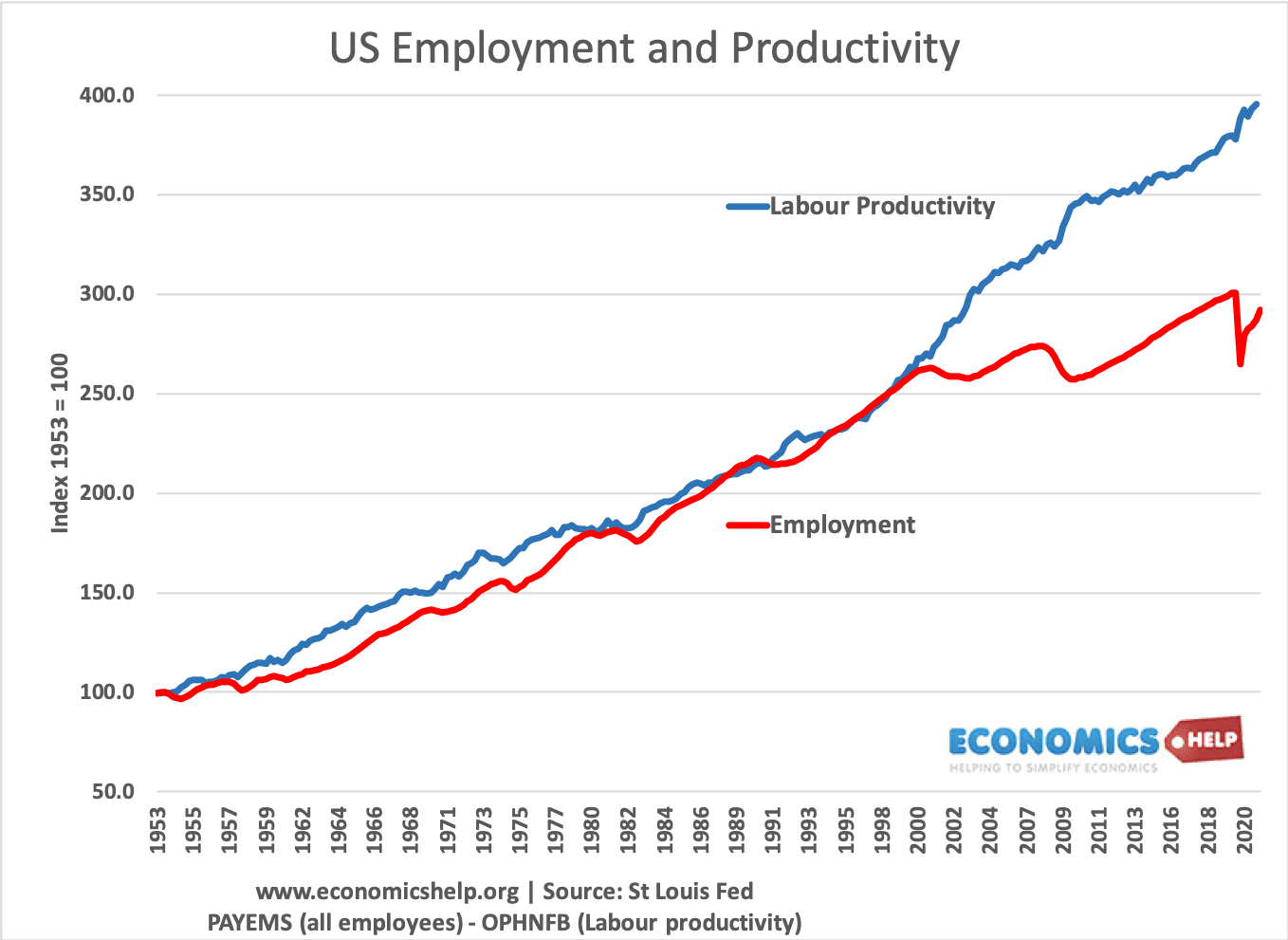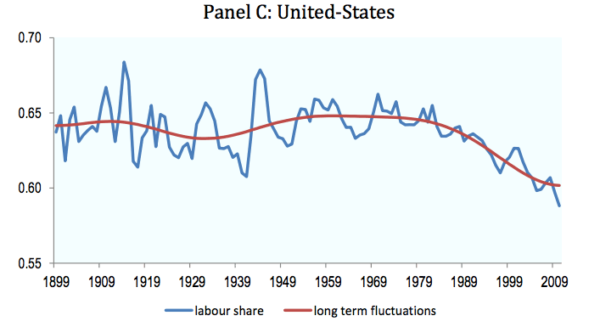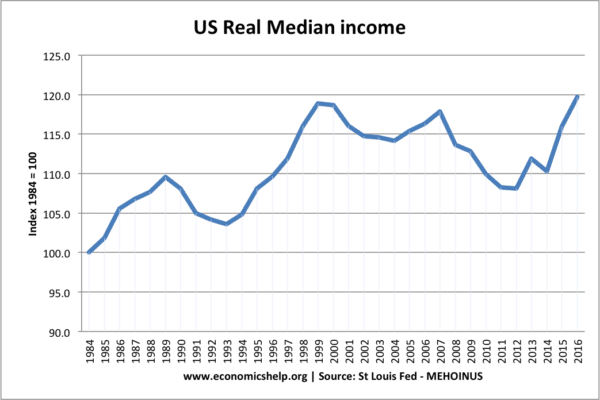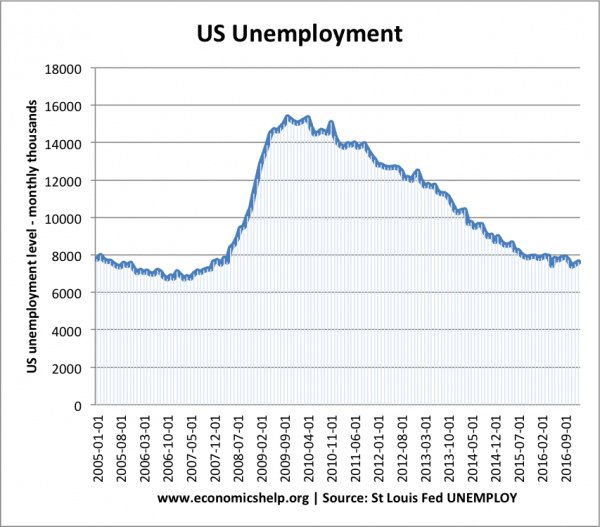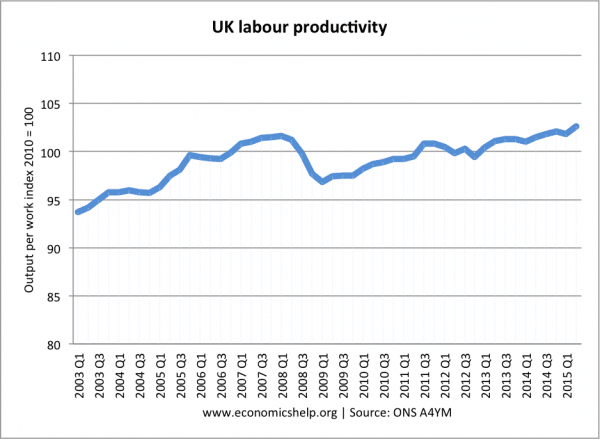Technological unemployment occurs when the adoption of new technology causes job losses. Automation is a process of using robots, AI and machines to take the place of workers – not just in manufacturing, but increasingly new avenues – even in the service sector. The pace of automation is causing job disruption – with workers – especially in manufacturing losing jobs.
Video Summary
Luddite Fallacy
Any good economist will be well-acquainted with the Luddite Fallacy – the argument that new technology destroys jobs in the long-run is not true. Back in the nineteenth century, skilled artisans went around smashing spinning machines – machines which were ‘taking’ their jobs. But, 100 years later and we take it for granted that the machines and the new technology of the Industrial Revolution have enabled higher wages and better job prospects. How many would want to go back to hand-weaving at £0.25 a day for a 14 hour day?
The logic of the Luddite Fallacy is that as jobs are lost in one area of the economy due to improved technology, new jobs are created in others. There are two main reasons why new technology replaces lost jobs.
- Jobs are created to make and design the new machines, and the investment in future machines
- Increased productivity enables higher wages and relatively lower prices. This gives consumers more disposable income which can be spent on a wider range of goods. Therefore, new jobs are created in new industries – due to the increased purchasing power. Similarly increased profit can lead to increased investment.
Is this time different? (Luddite Fallacy Fallacy!)
Some argue that with the current levels of automation, there is a greater chance of a more prolonged rise in technological and structural unemployment. It is argued, automation enables a small proportion of people in the economy to benefit from an increased share of national income. The winners from automation are company owners, shareholders, and the highly skilled mobile labour who design software. However, there are concerns that the benefits of this increased productivity are not “trickling down” to those workers who have been displaced by the new technology. Former towns which relied on full-time permanent jobs in manufacturing have struggled in this brave new world of automation and globalisation.
Supporters of this argument can point to the recent experience in the US
Is this evidence of technological unemployment?
Since 2000 employment growth has fallen behind productivity growth. Firms have benefitted from implementing automation, but employment growth has not kept up.
Automation benefitting US companies
Note: This graph for company profit is nominal profit not adjusted for inflation.
Another sign of possible technological unemployment is that since 2000, there has been a sharp rise in company profitability. Suggesting that the gains of recent productivity improvements are leading to more profit and not feeding through into higher real wages and employment. IT firms especially are sitting on large cash reserves, unable or unwilling to spend or invest.
This shows a fall in labour market share since the late 1970s. It is a trend replicated in many other western economies. If we tracked median wages (which ignore top 1% of pay earners) the decline would be even greater.
Source: St Louis Fed Real Median incomes
Other reasons for falling labour share of income
Economists will also be wary of any “This time is different argument” – See booms and bust
It is easy to blame everything on automation and improved technology, but many factors are at work behind recent trends.
- Demographic factors. As baby boomers retire, this will have the effect of reducing the labour force – limiting employment growth
- Increased monopoly power. Increased monopoly power is a reason for the growing profitability of firms. Though is automation a factor behind increasing monopoly power?
- The decline of trade unions. Unions have declined in western world they have lower membership and less influence on wage bargaining
- Increased labour market flexibility. The growth of the gig economy and rise of self-employment and part-time work had kept real wage growth more stagnant.
- Equalising effects of globalisation. With globalisation, firms are more willing to shift production to lower labour cost producers. This leads to relatively lower wages in countries like the US.
US unemployment
It is also worth bearing in mind US unemployment has fallen significantly since the great recession.
UK experience
The UK experience is different to the US. Since 2007, productivity growth has stagnated, yet employment growth has exceeded all expectations.
This suggests that in the UK automation is not causing a fall in employment perhaps the opposite. However, there are concerns that the UK has a low take up rate of robots and automation. According to one study “The UK has just 33 robot units for every 10,000 employees, compared with 93 in the US and 213 in Japan.” (link) This may explain part of the UK productivity puzzle – and why productivity growth has been so poor.
Whilst UK employment has risen, real wages have been effectively stagnant since 2007.
Conclusion
The main effects of automation are yet to come. One study by PwC states that 30% of UK jobs could be at risk of being replaced due to robots and Artificial Intelligence. In the US, up to 38% of jobs could be at risk of automation.
Economic history suggests that new technology can benefit everyone in society – enabling growth in productivity, real wages, shorter working weeks and greater job satisfaction – and any technological unemployment will prove to be short-lived.
However, there is are no guarantees that will always occur. If the recent trend of falling labour market share and growing company profitability continues – there is a danger that automation will lead to a society of winners and losers. To combat this, there may need to be targeted policies from a universal basic income to improved education and training, and perhaps a better way to tax large multinationals.
Related

